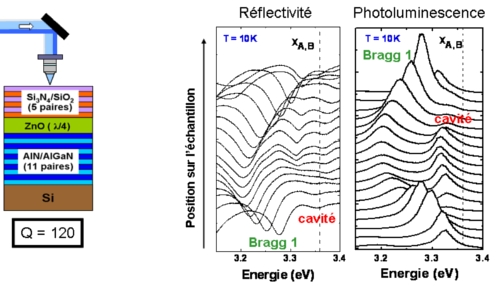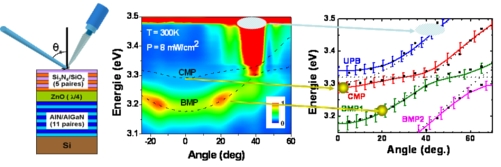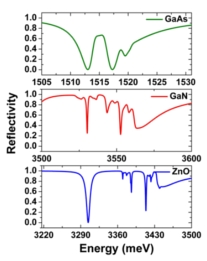Rechercher
Accueil > La Recherche > Axes & Equipes > Physique de l’Exciton, du Photon & du Spin > Optique des états collectifs et des spins (OECS) > Etats collectifs dans les semiconducteurs > Condensats de polaritons et lasers à polaritons dans les microcavités GaN, ZnO
ZnO Microcavities
publié le , mis à jour le
Excitons in wide band gap semiconductors, and especially ZnO, present binding energies and oscillator strength one order of magnitude larger than GaAs. Our theoretical predictions in 2002 have shown that the strong coupling in ZnO microcavities can be robust up to room temperature, with specificities recently investigated in our group.
Within the ANR project ZOOM, coordinated by our group (in collaboration with CRHEA, LASMEA and LPN), this strong coupling has been demonstrated at 300K. Our prospect is to demonstrate the feasibility of a ZnO polariton laser, so that we now turn to the optimization of the cavity quality factor, and the understanding of the microcavity emission under strong photo-excitation.
This studies benefit from the strong experimental potential developed in the group over the past years, and initially dedicated to the study of the recombination dynamics in wide band gap heterostructures (time-resolved spectroscopy), and to the spectroscopy of individual quantum dots (home-made UV-dedicated microphotoluminescence). A specific goniometer has also been set up for angle-resolved spectroscopy.











